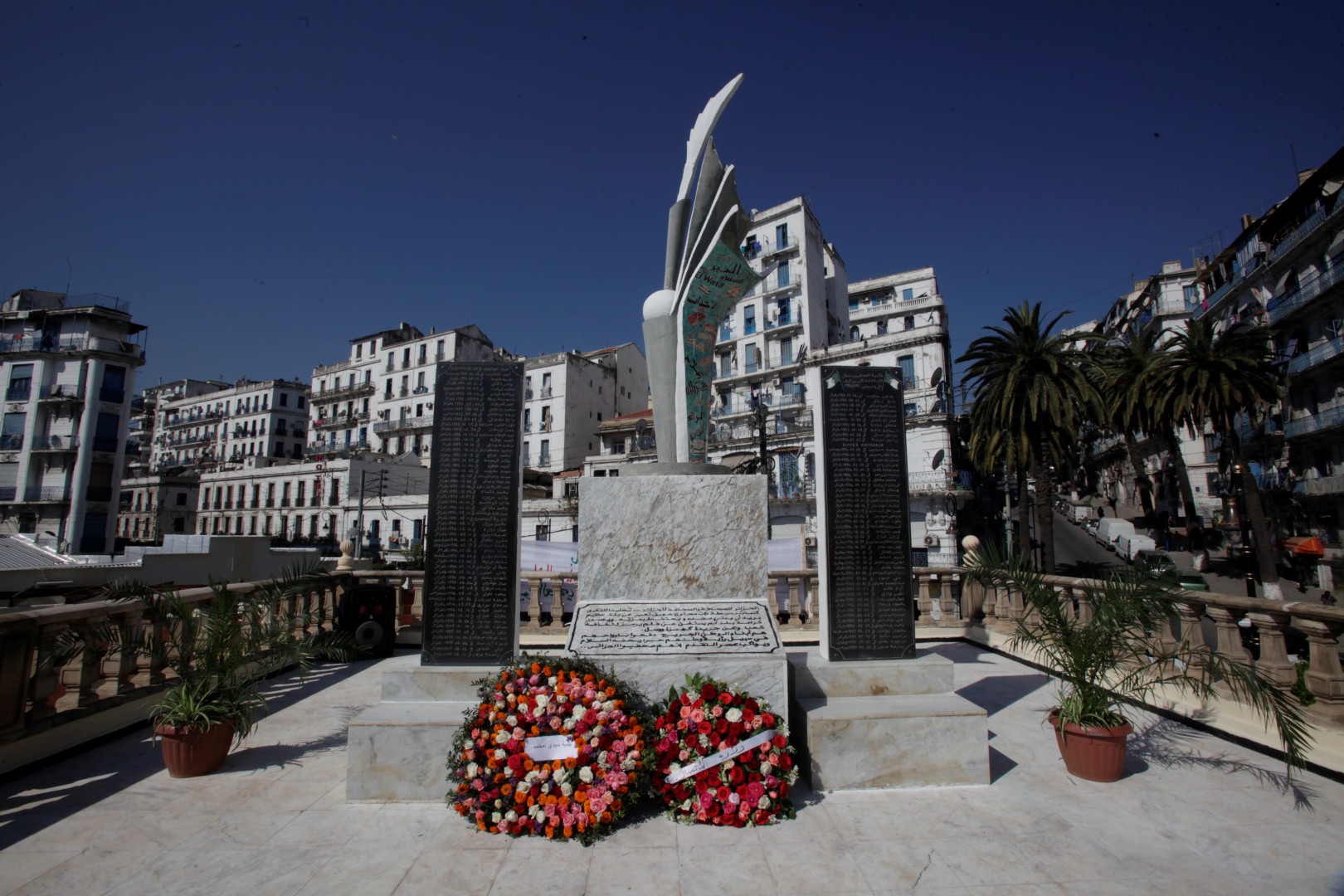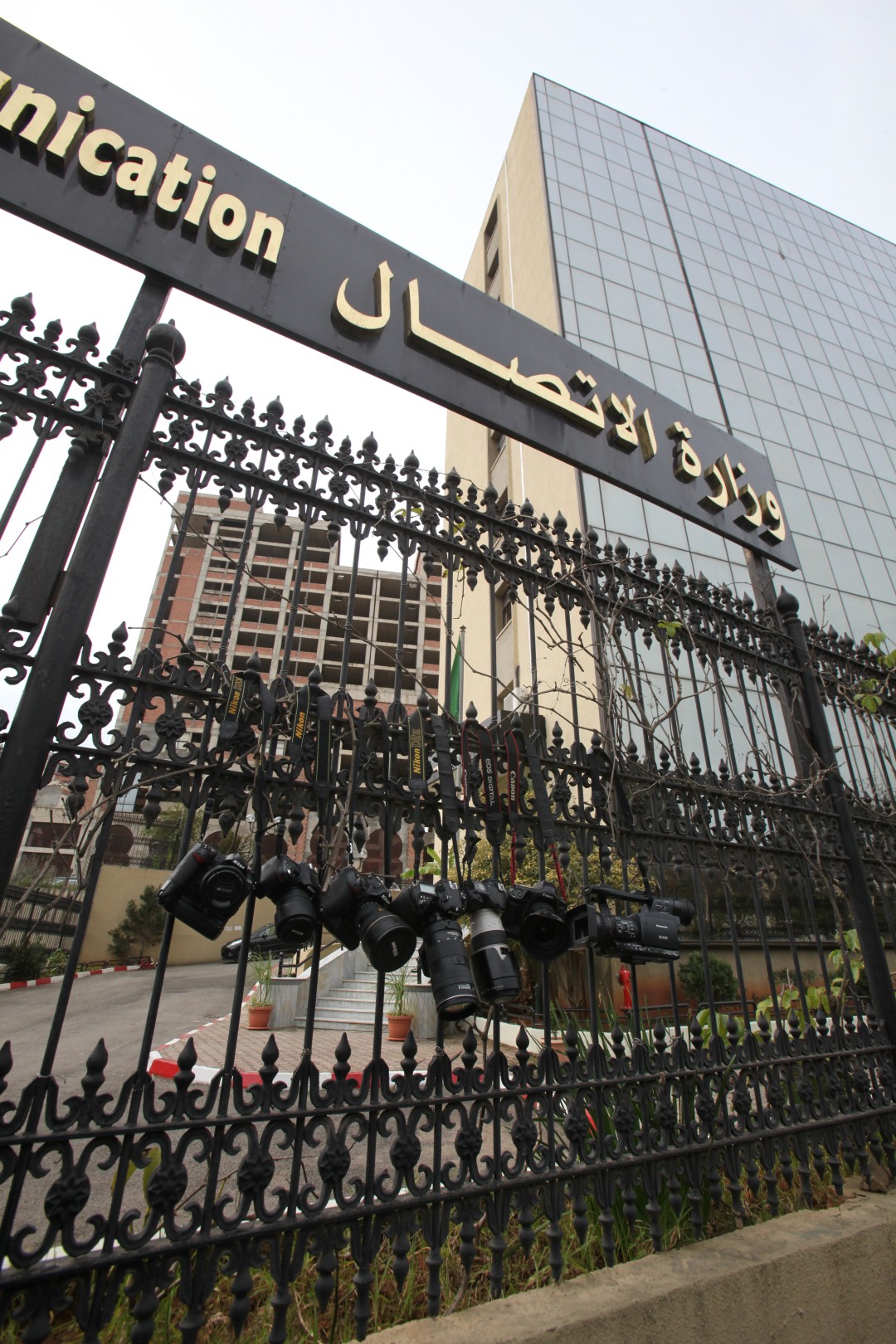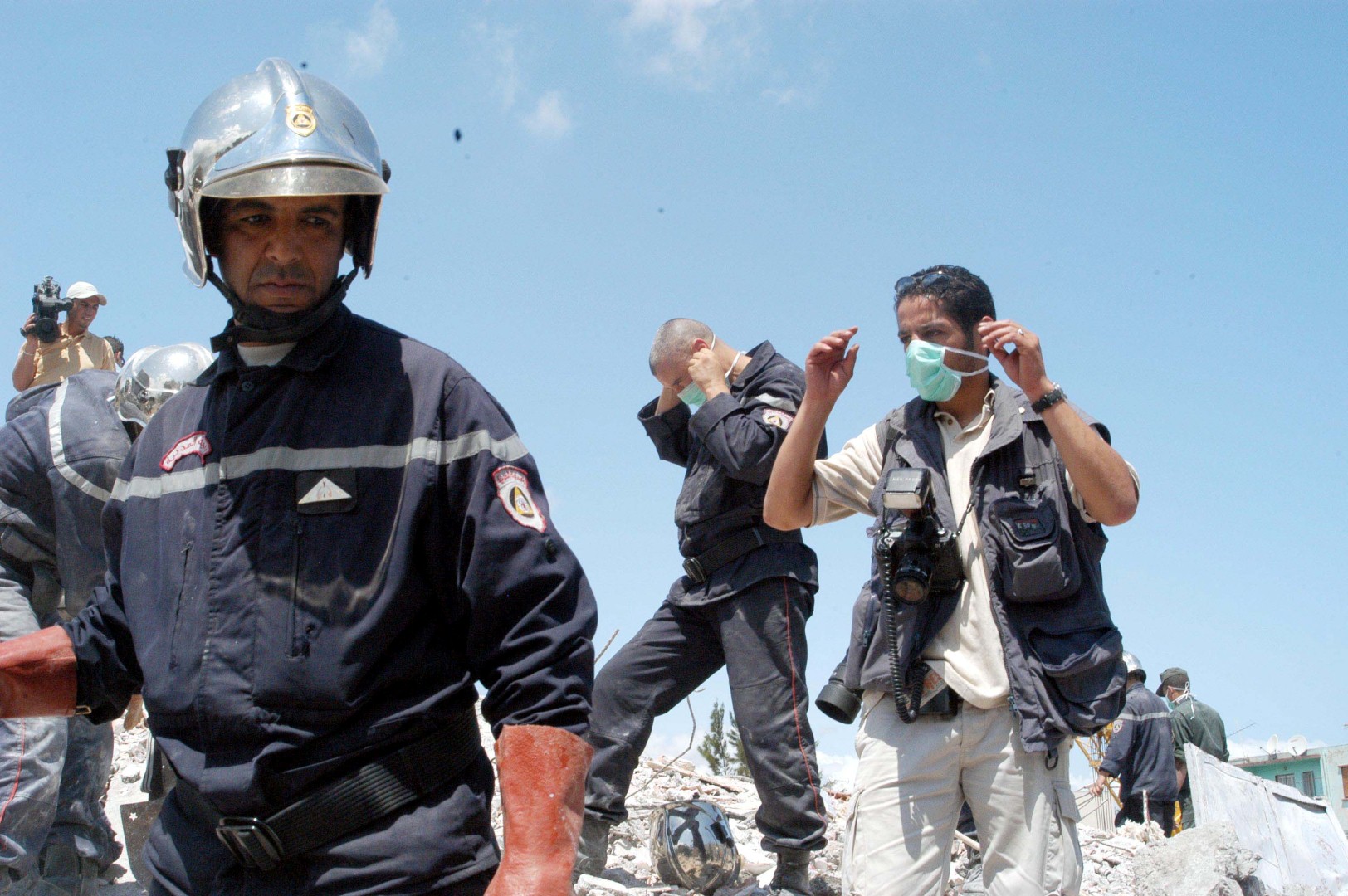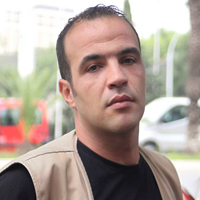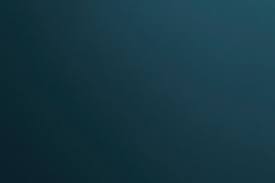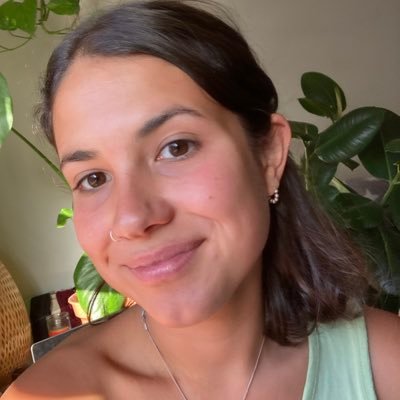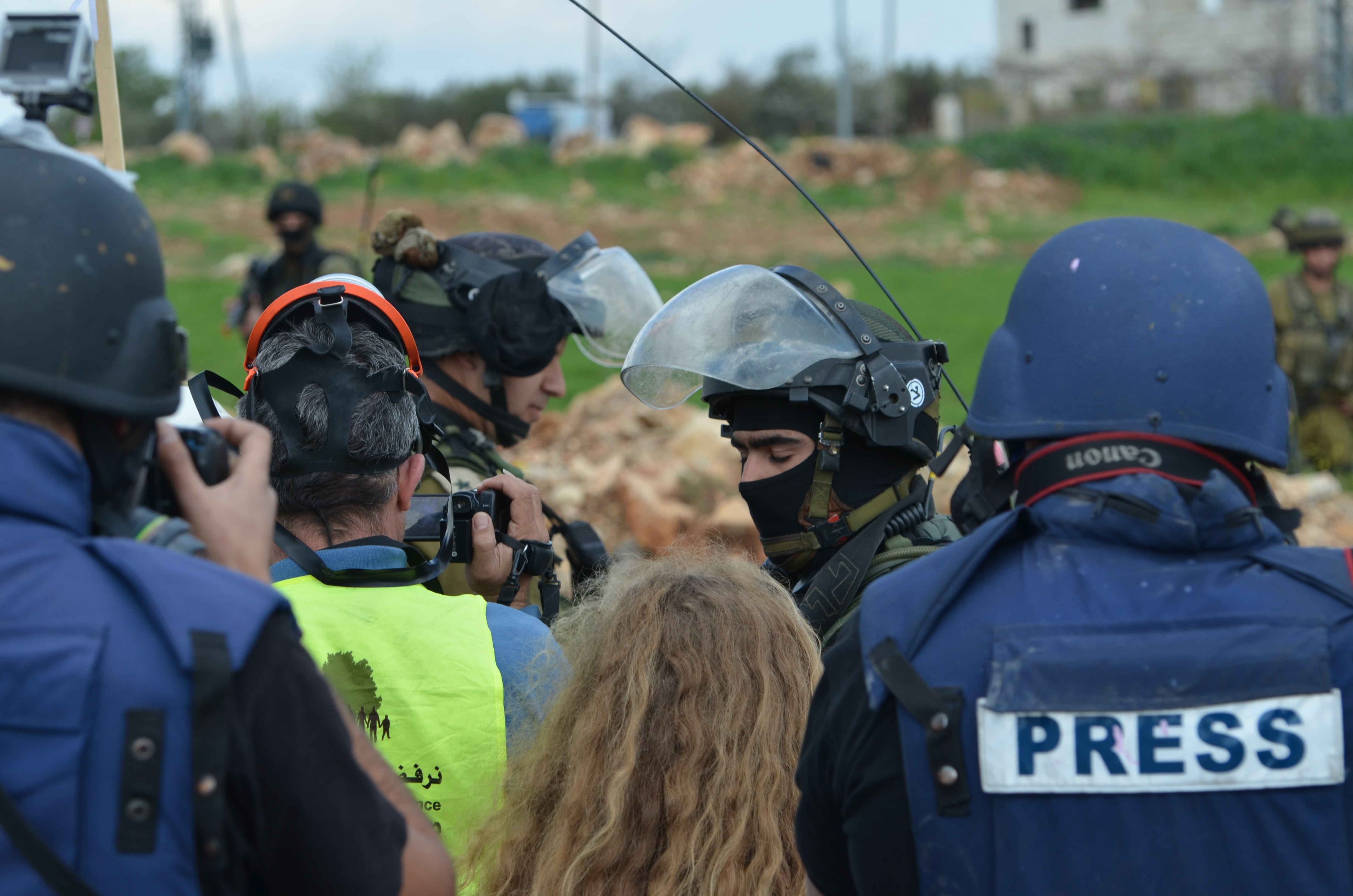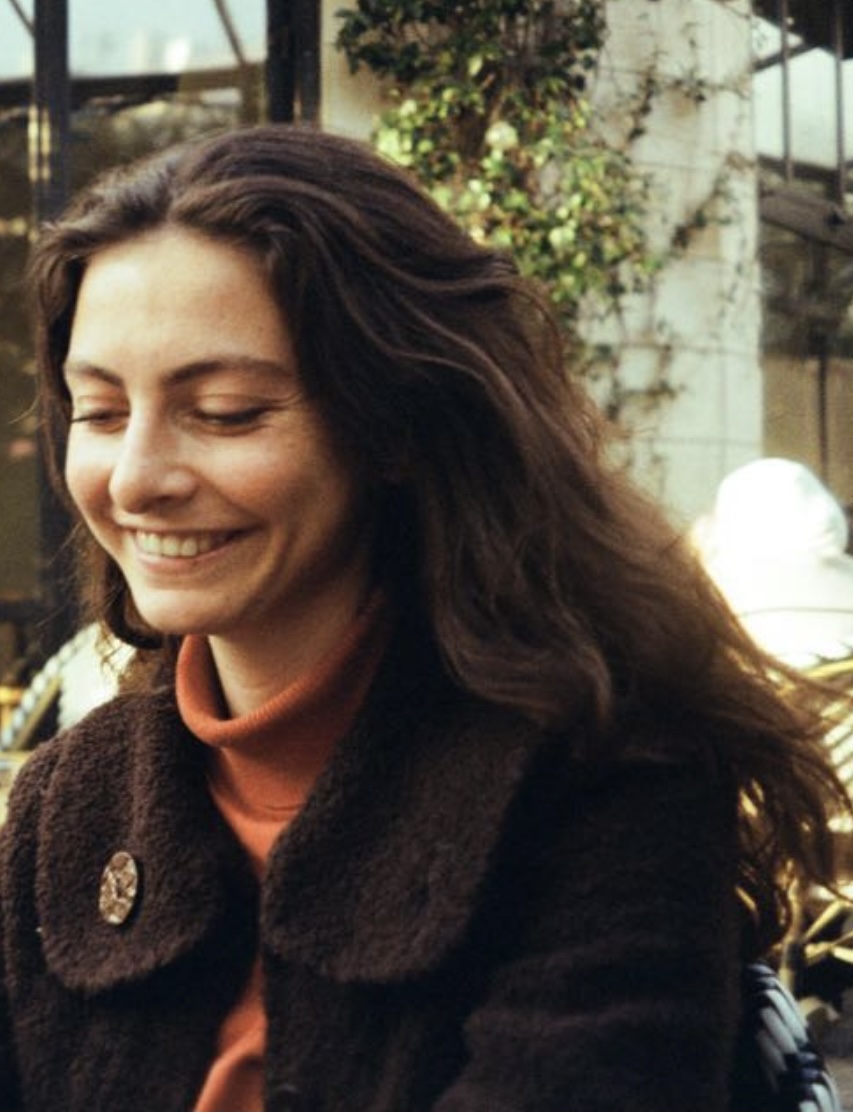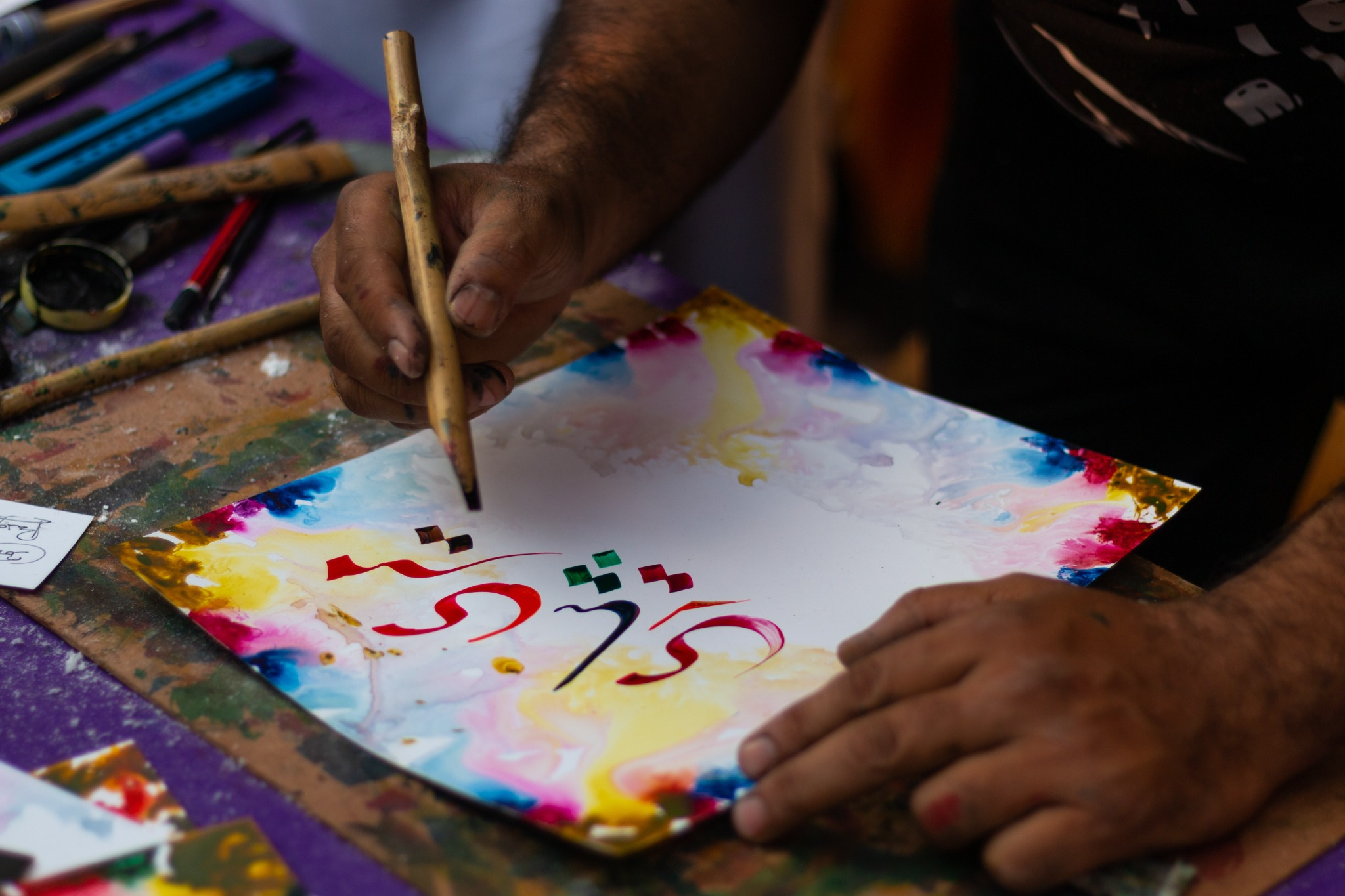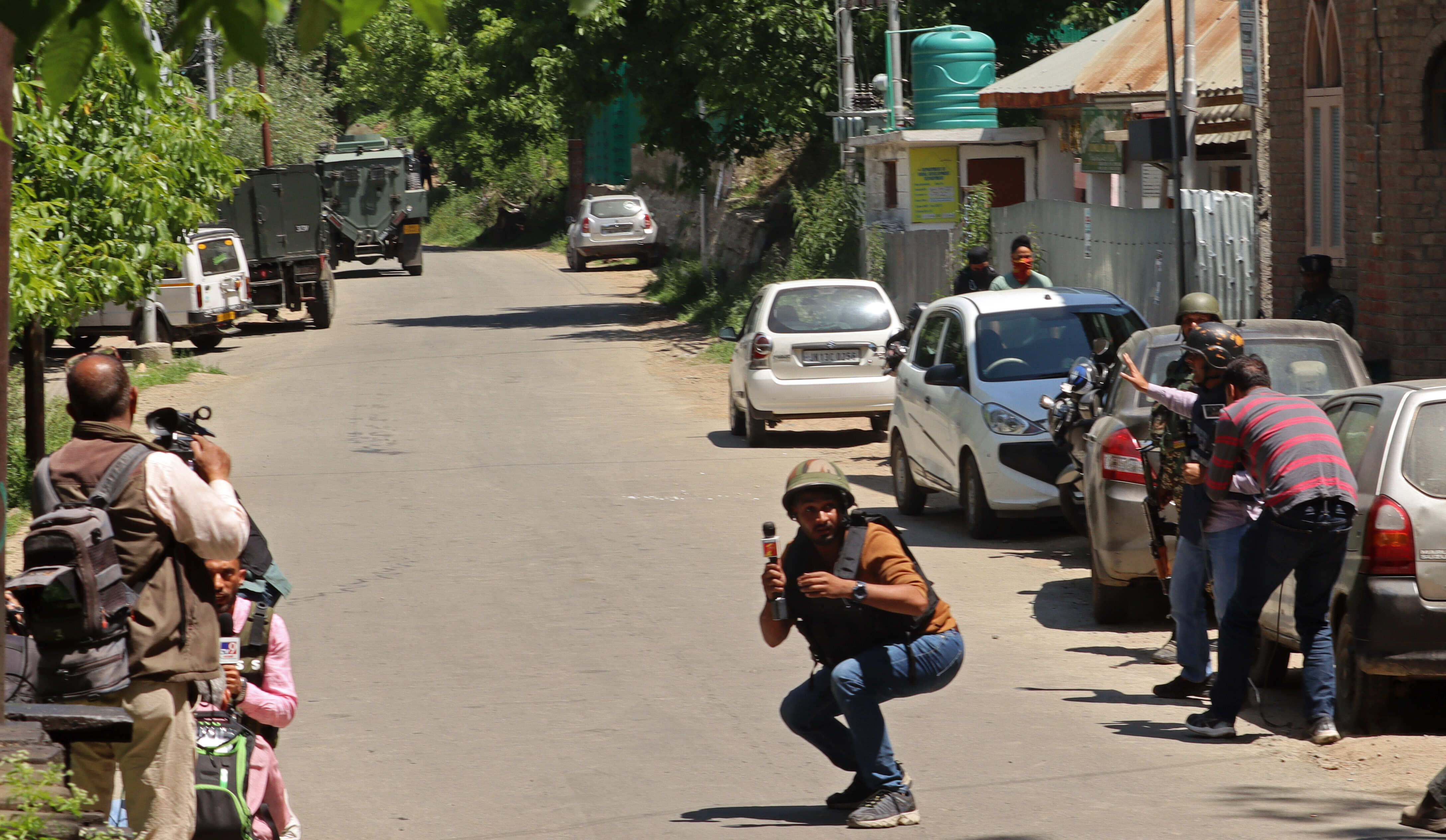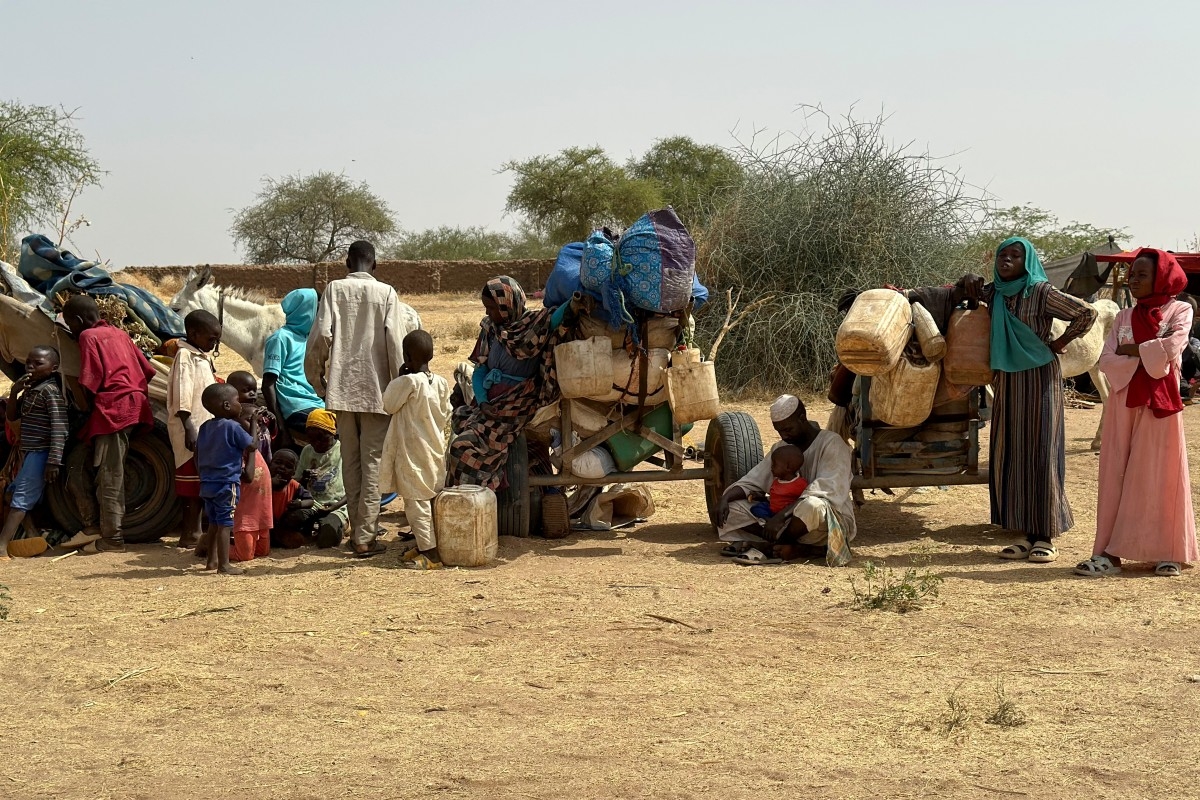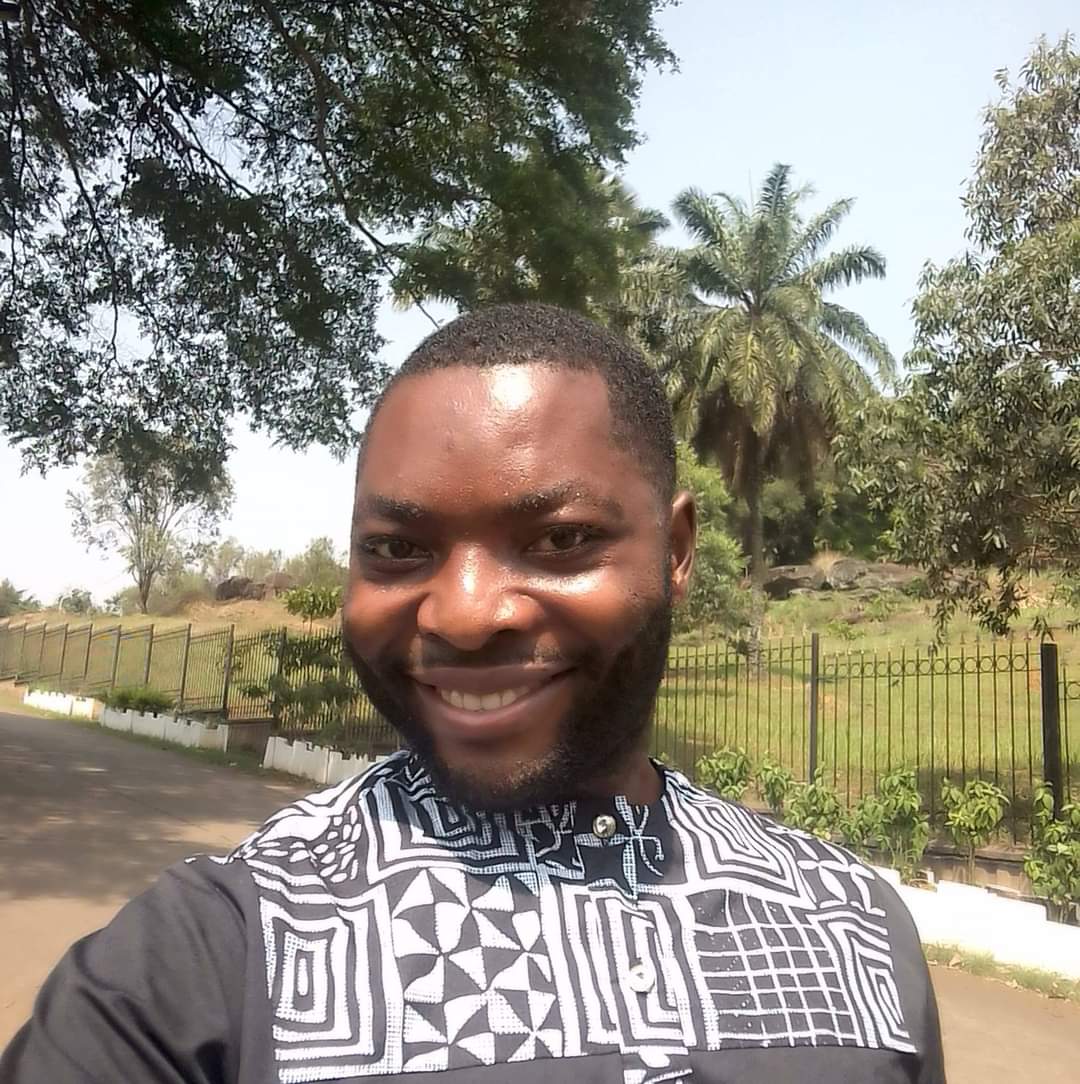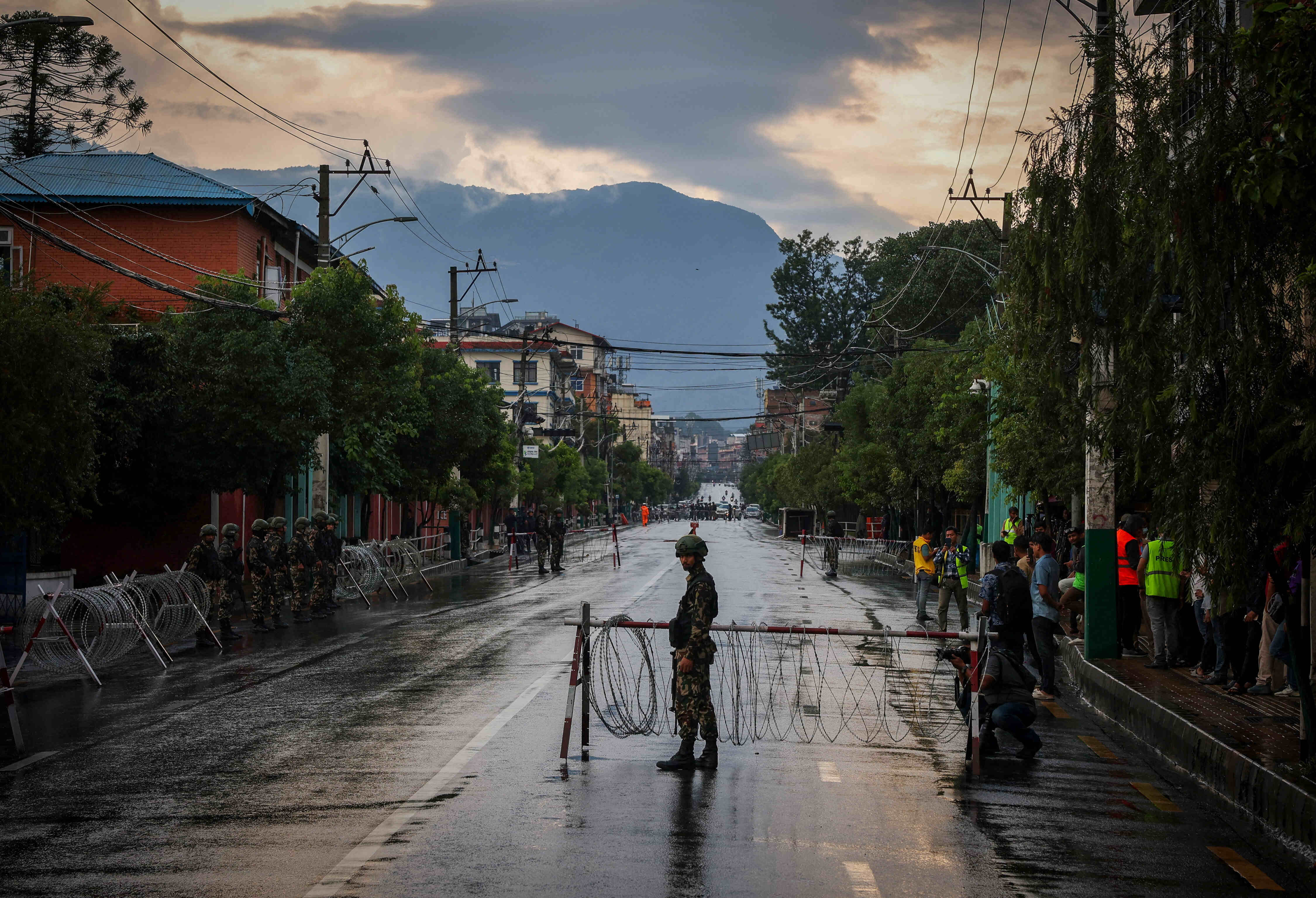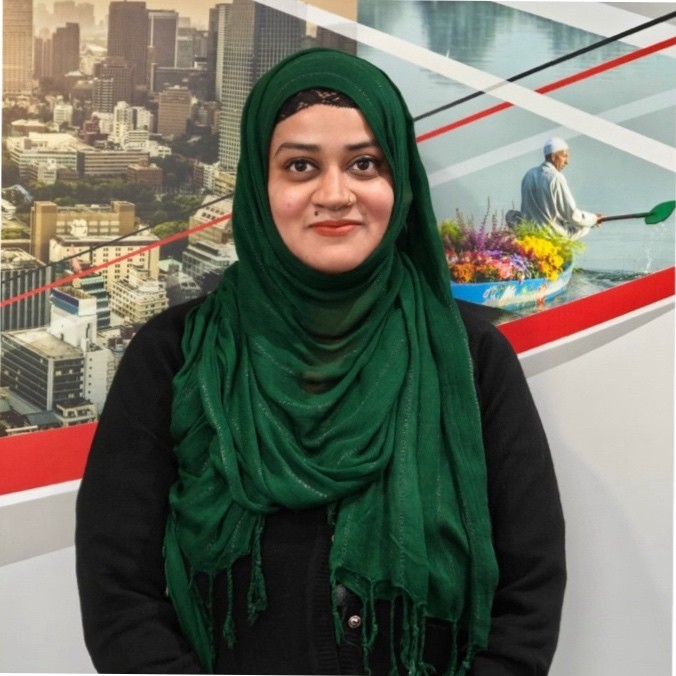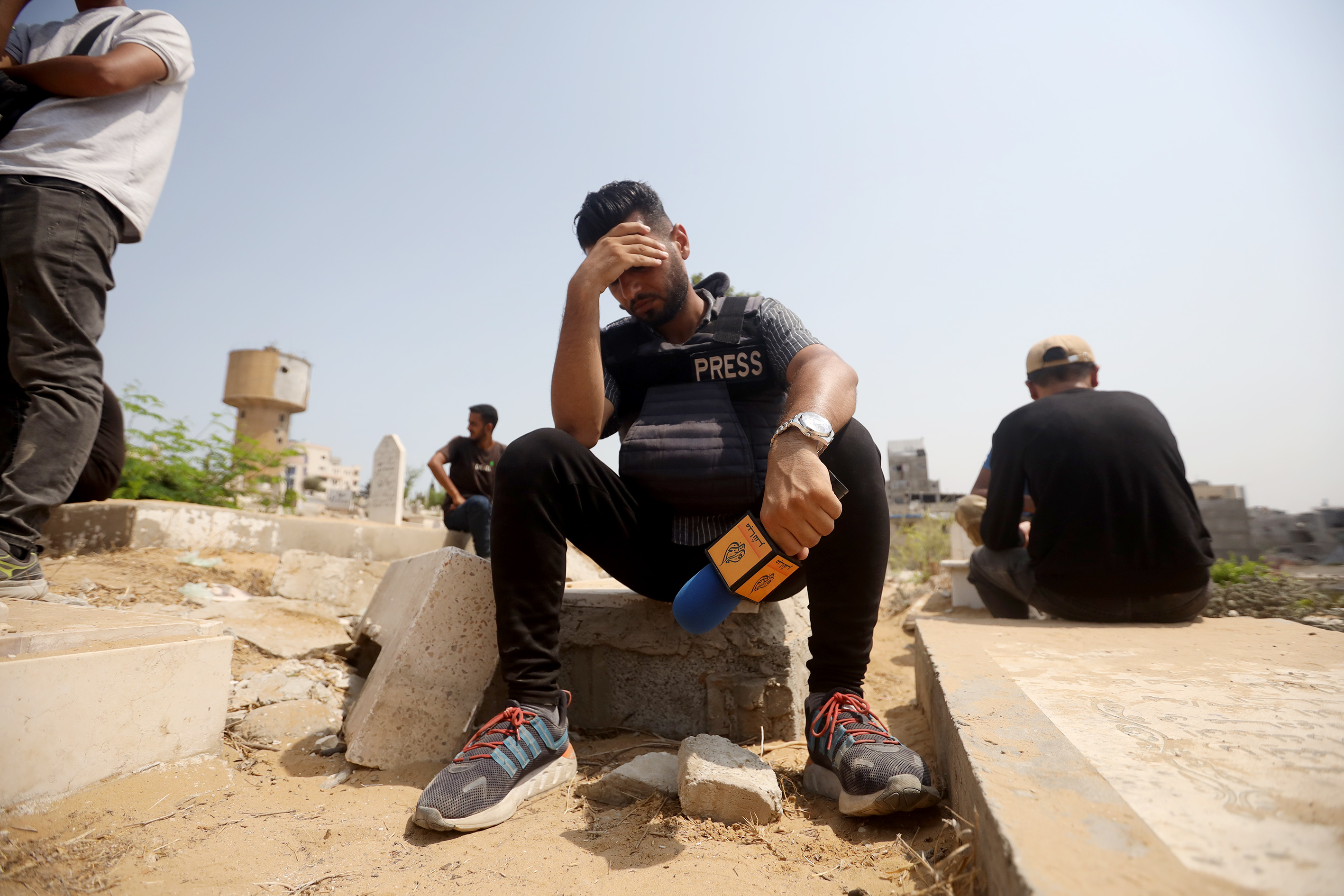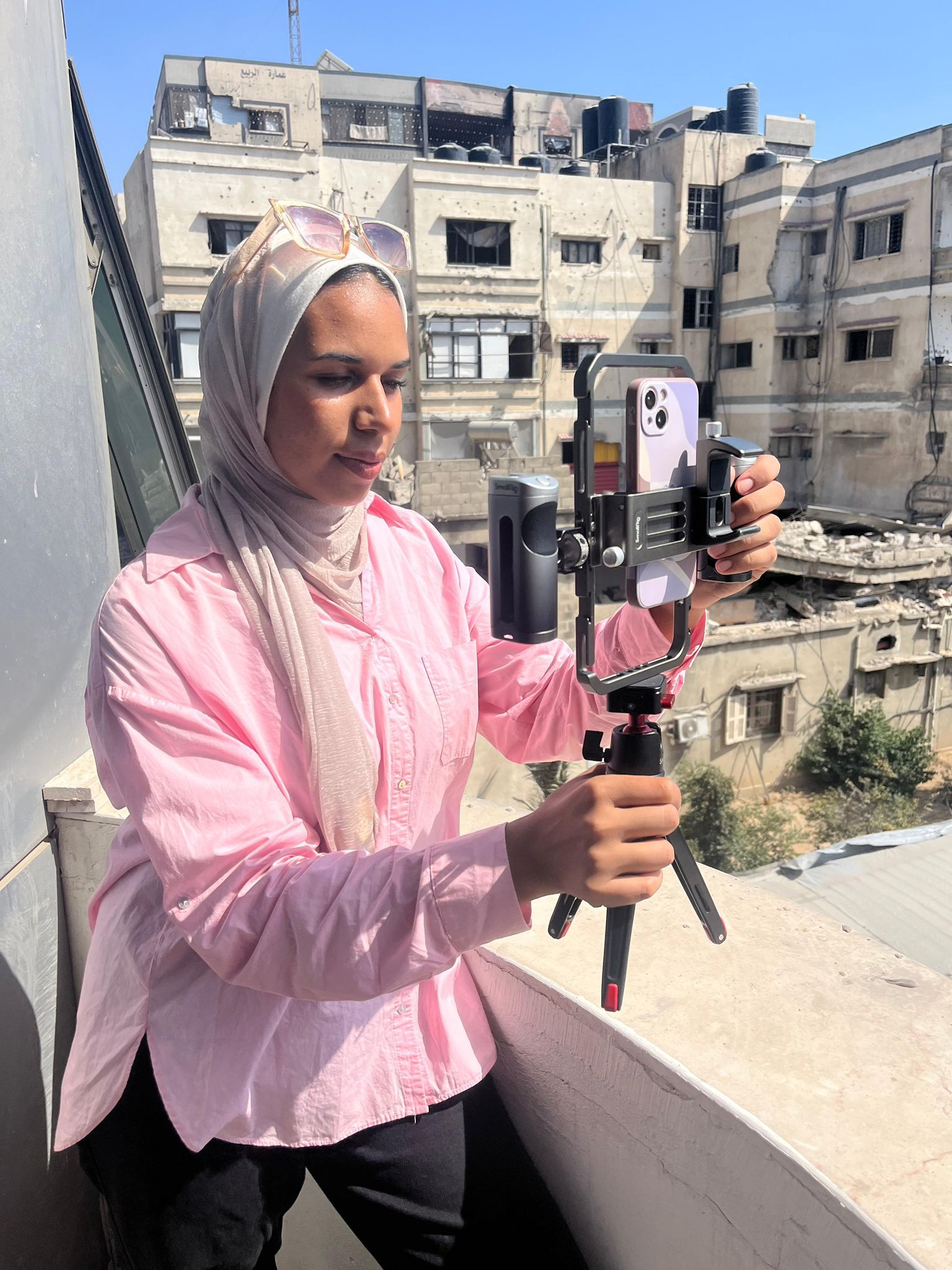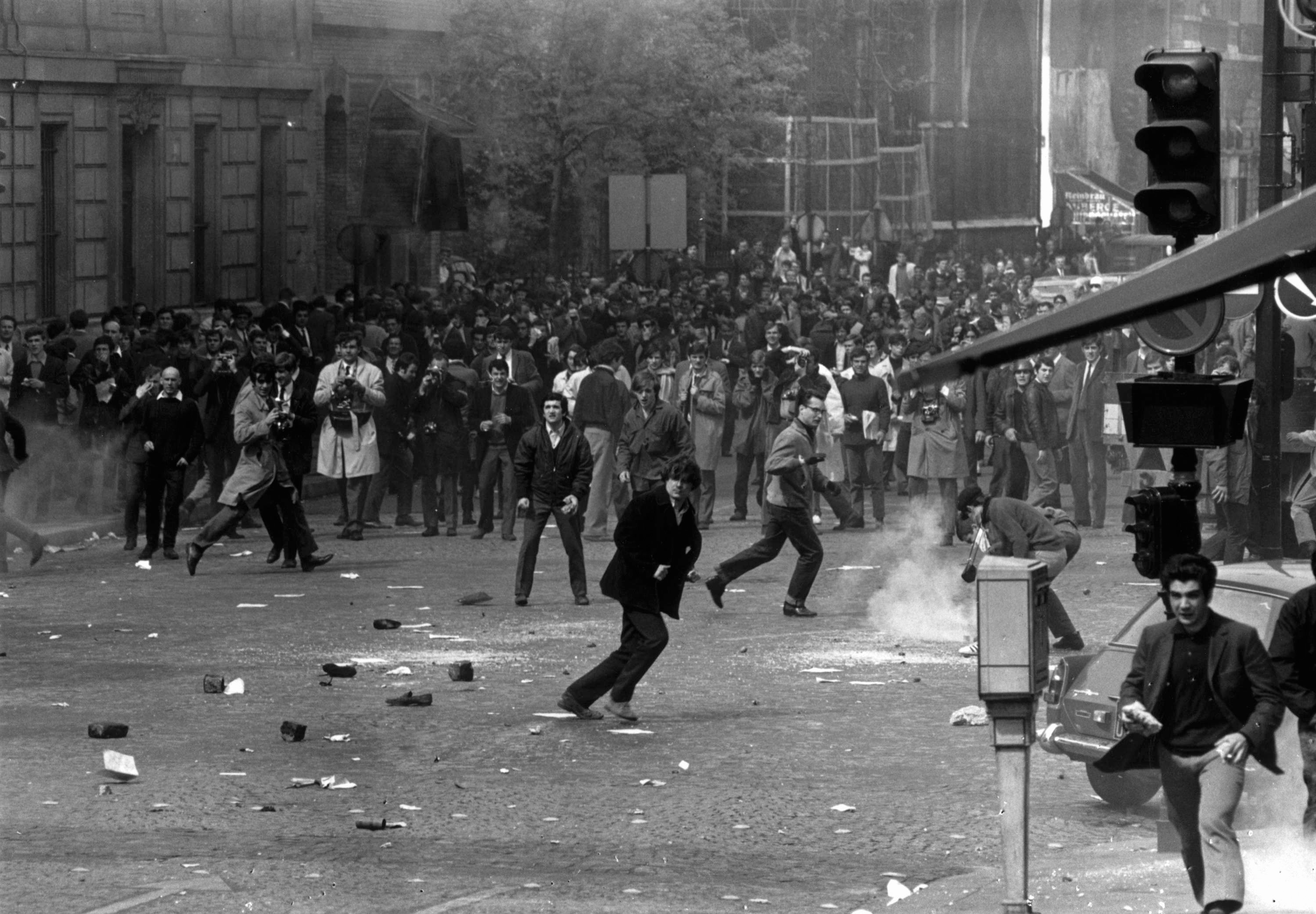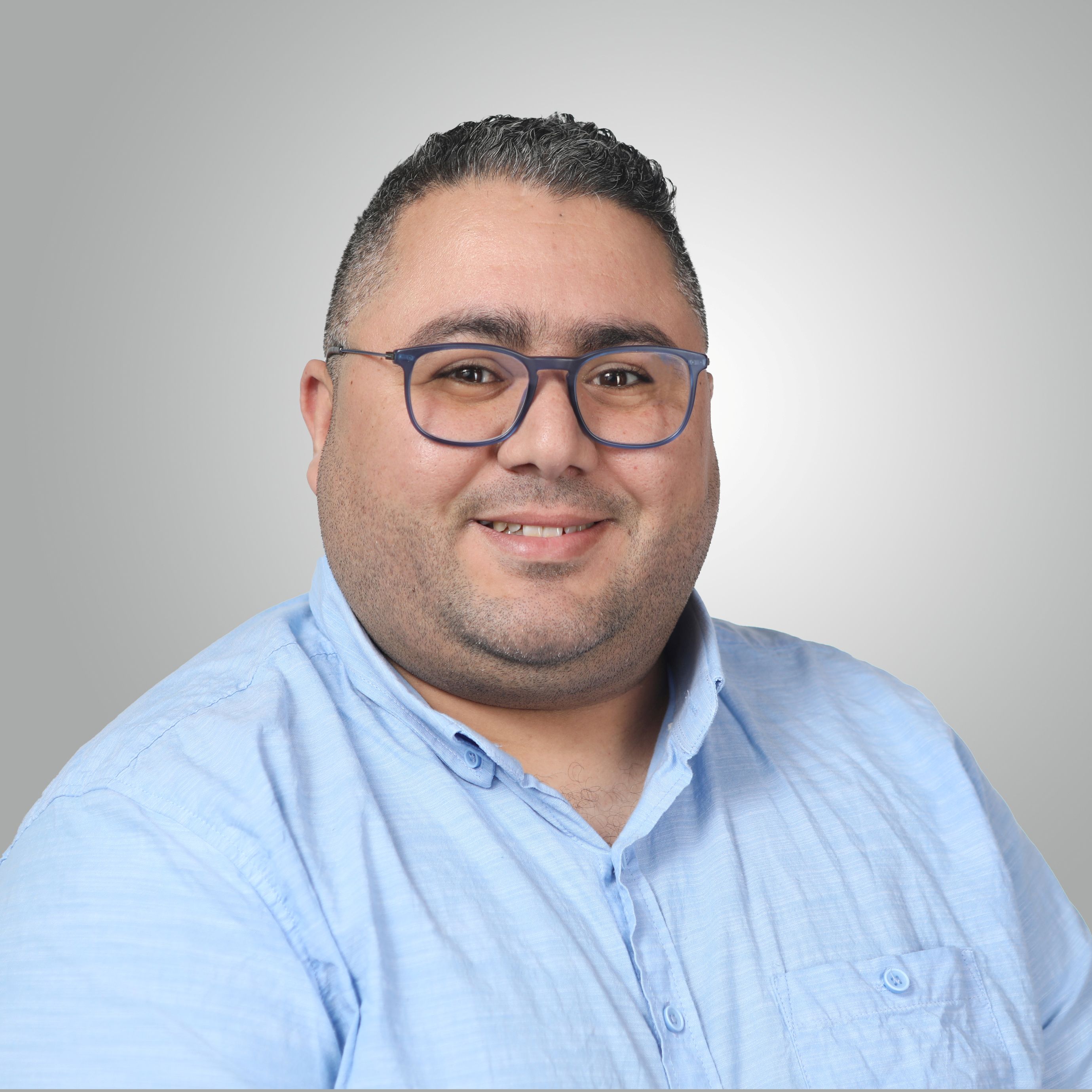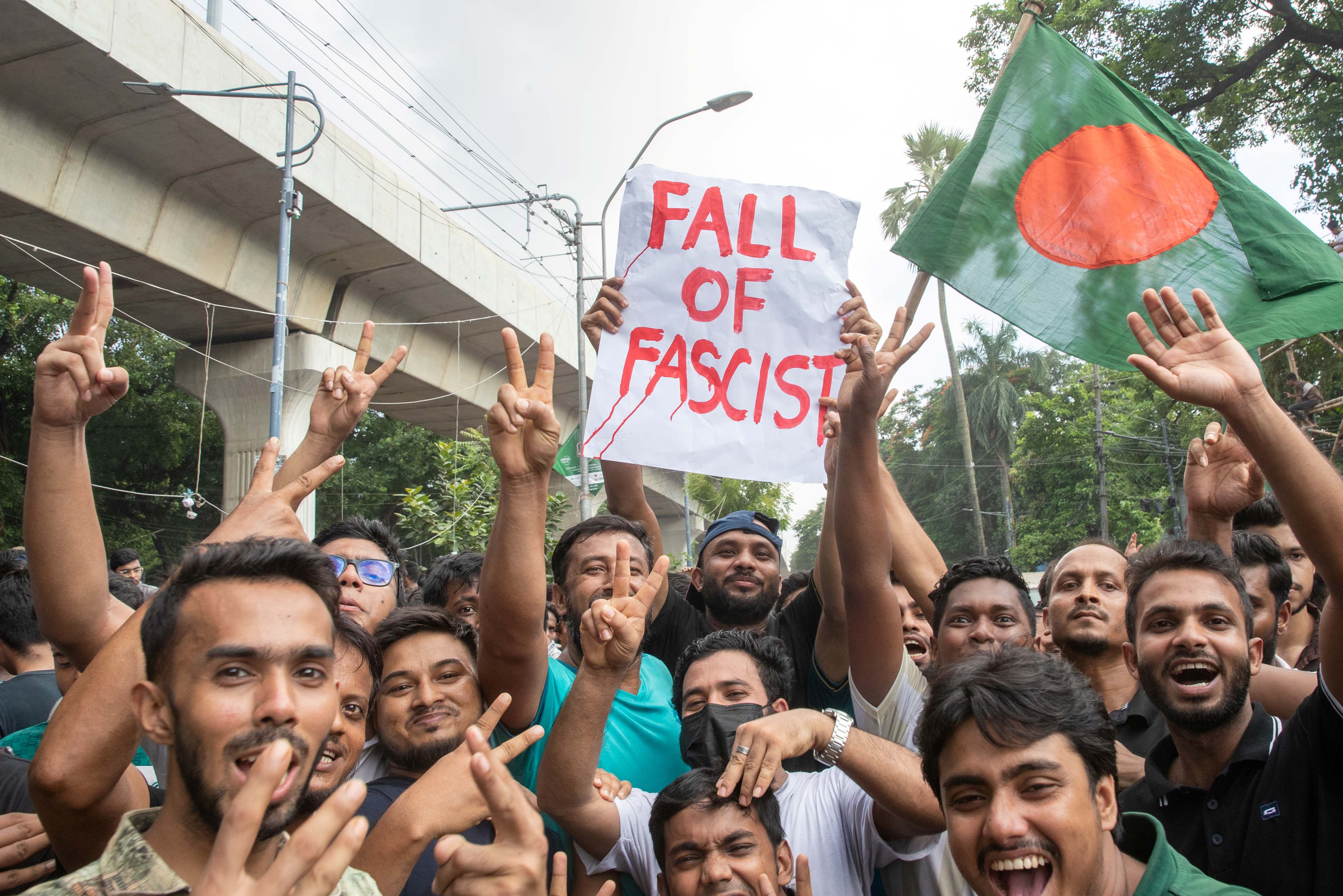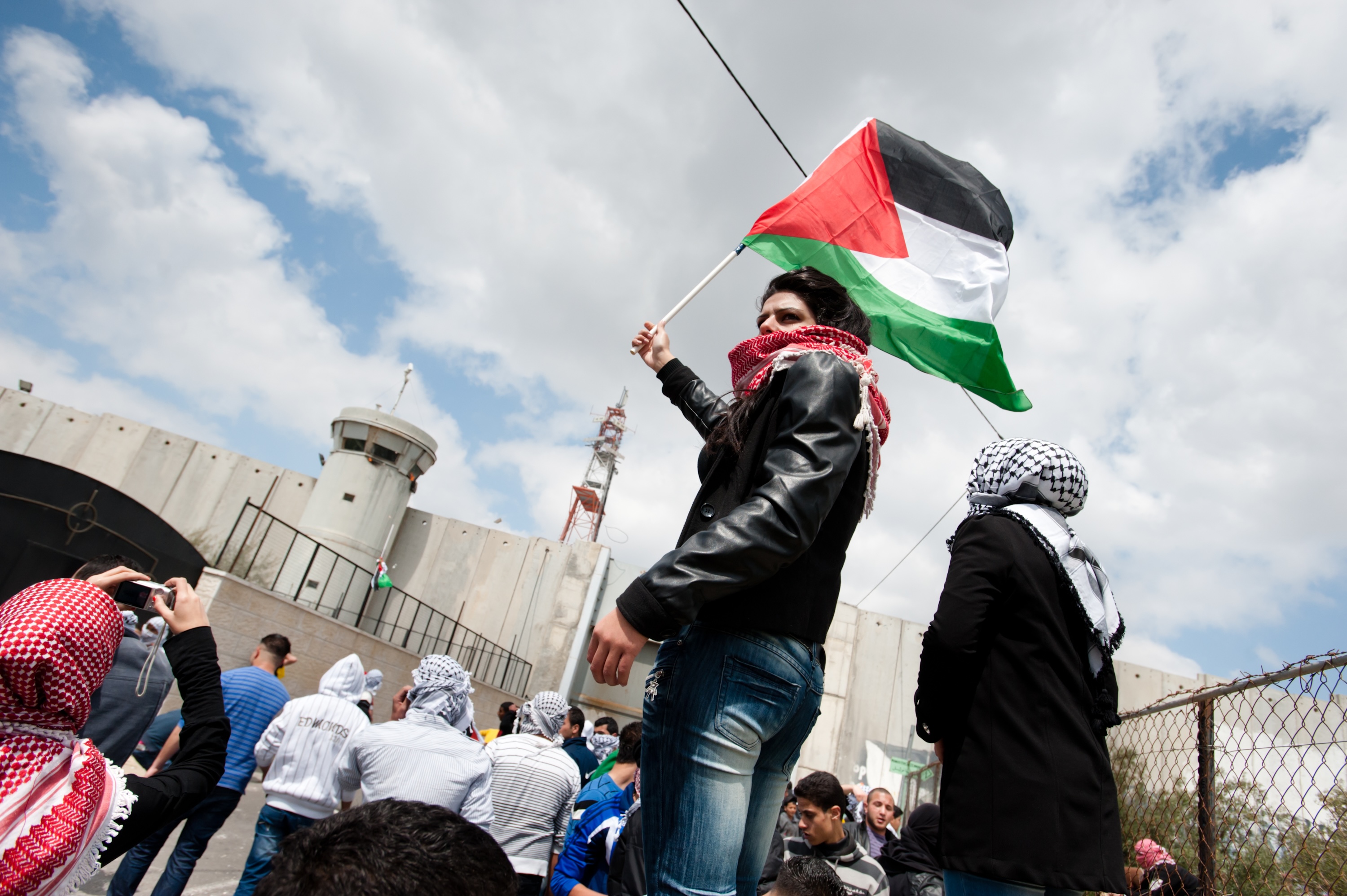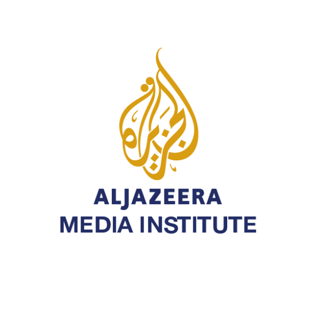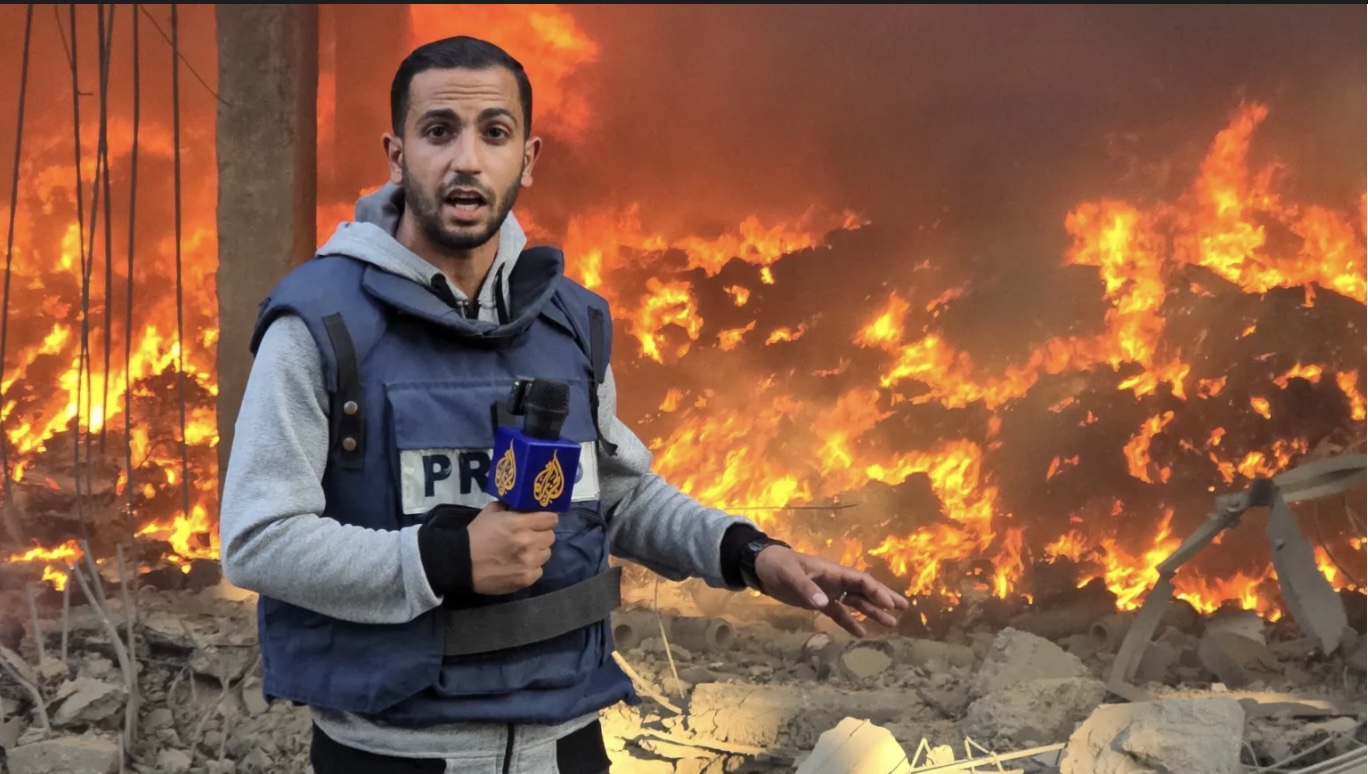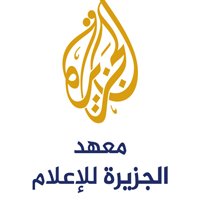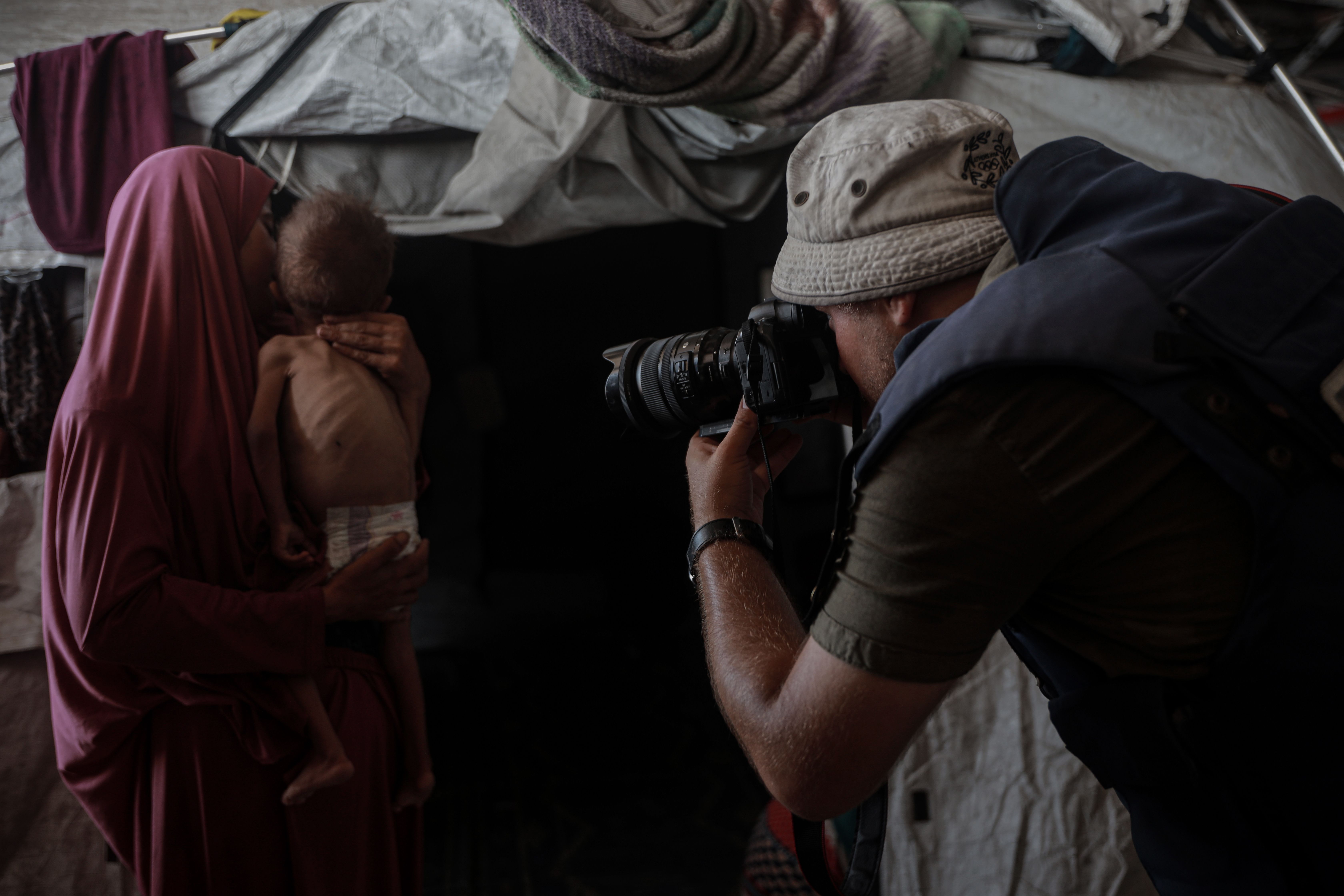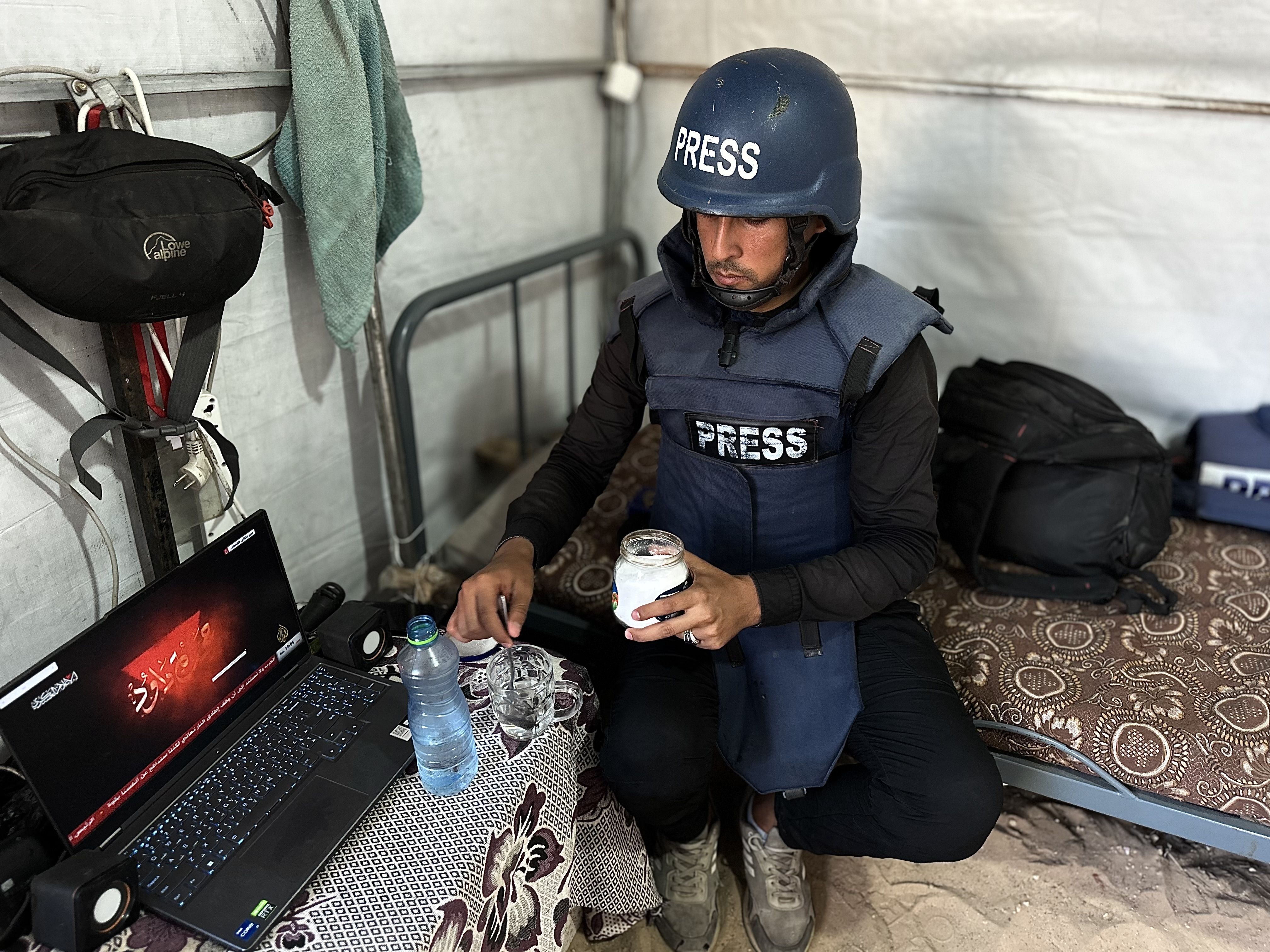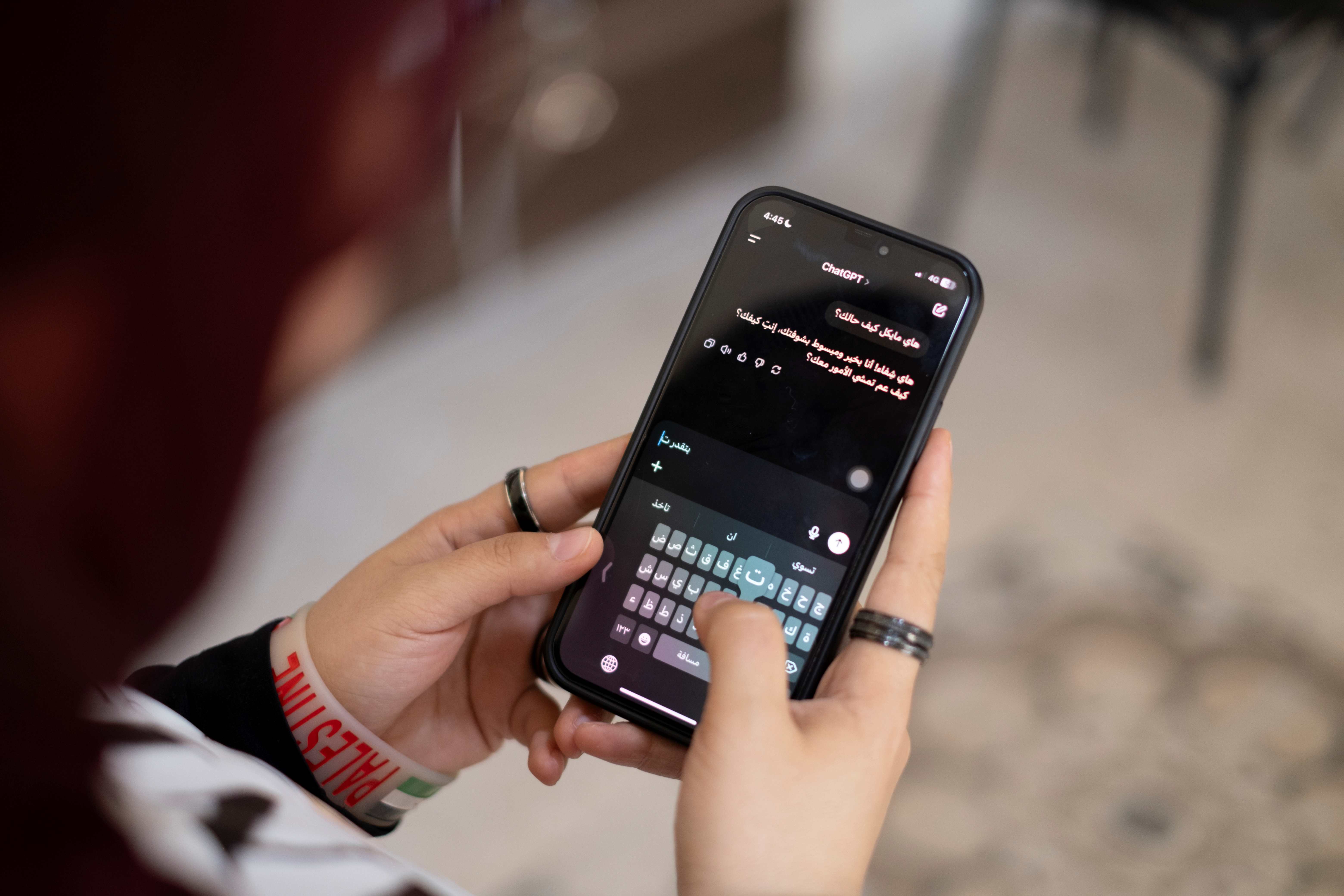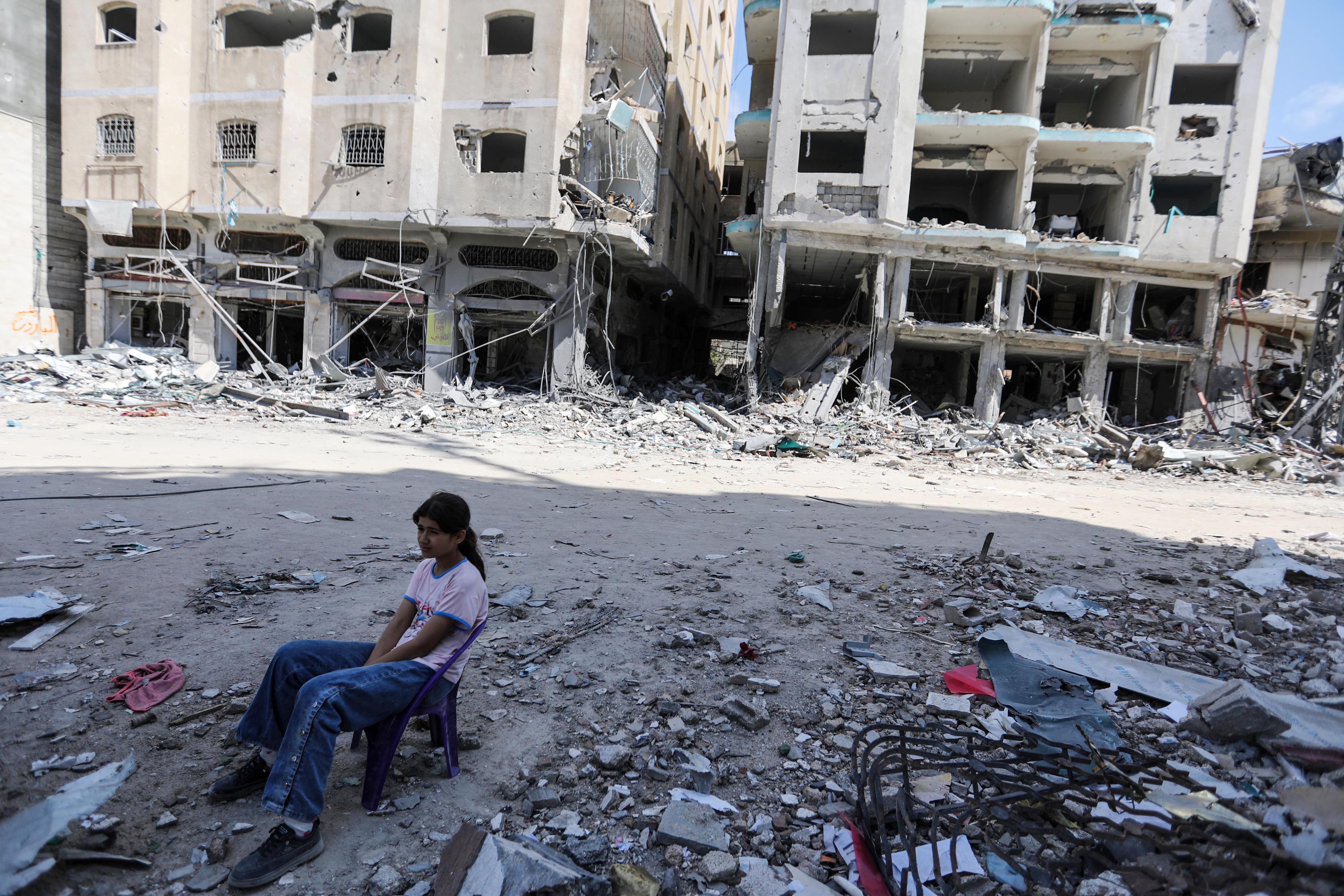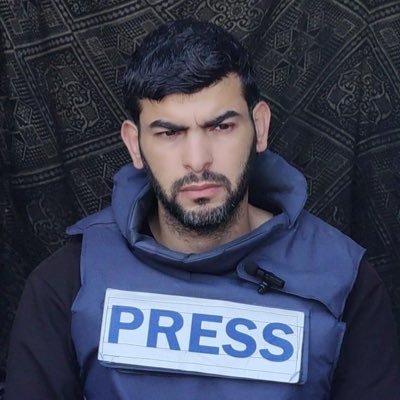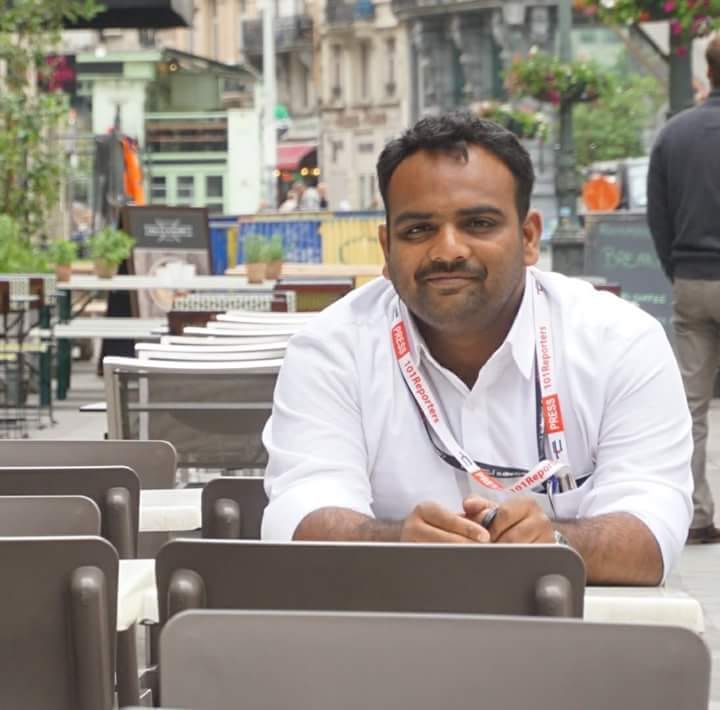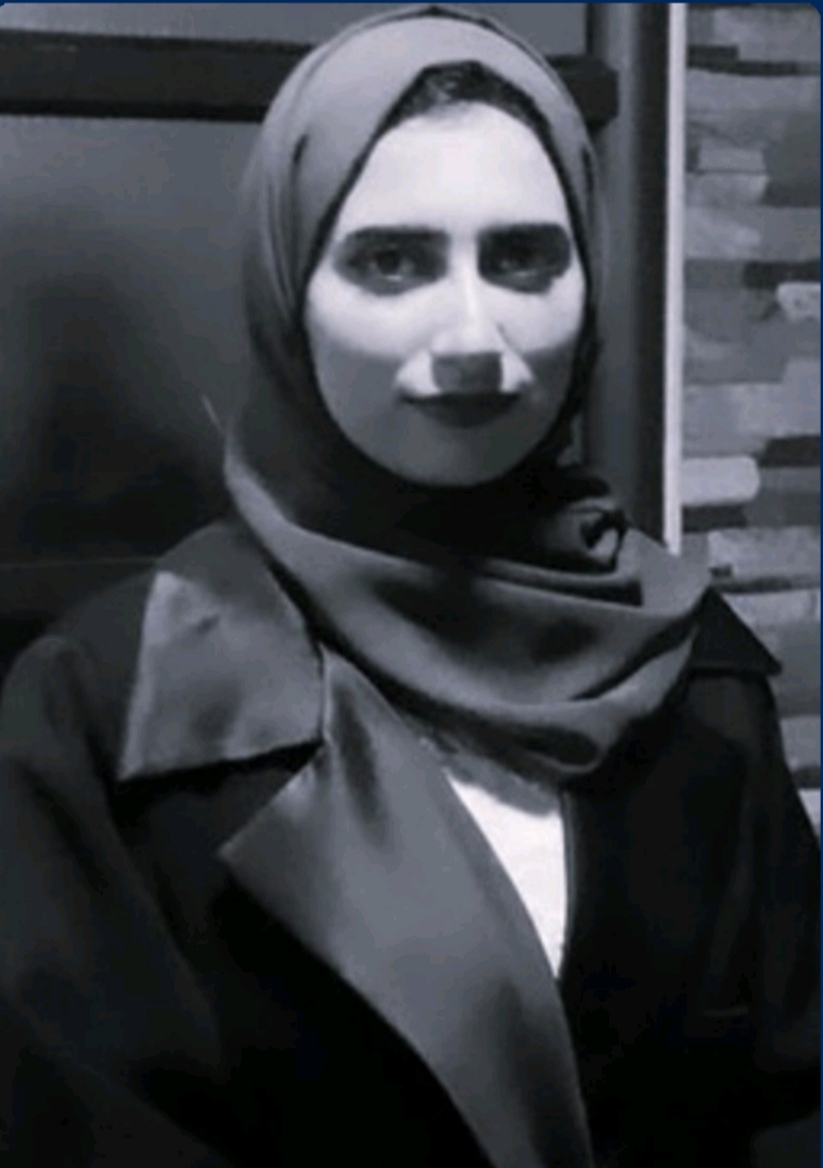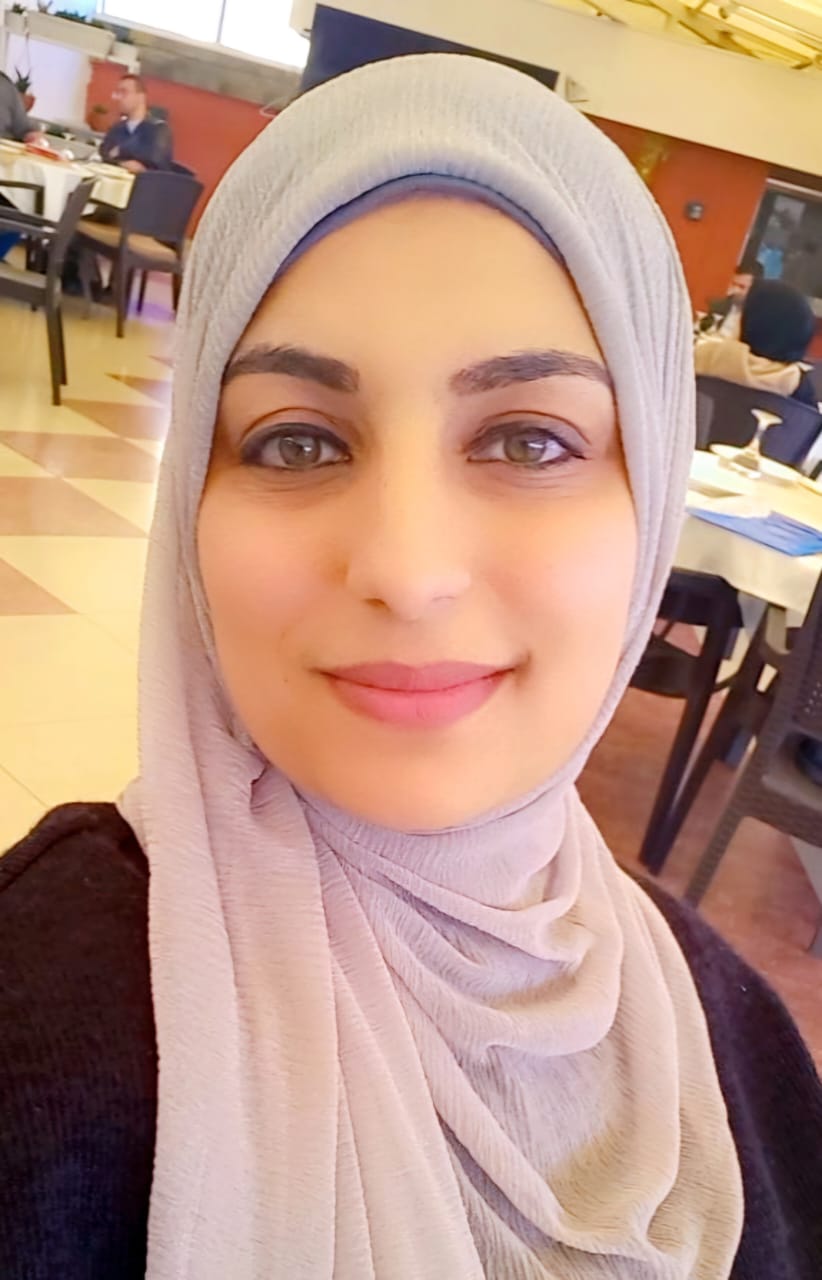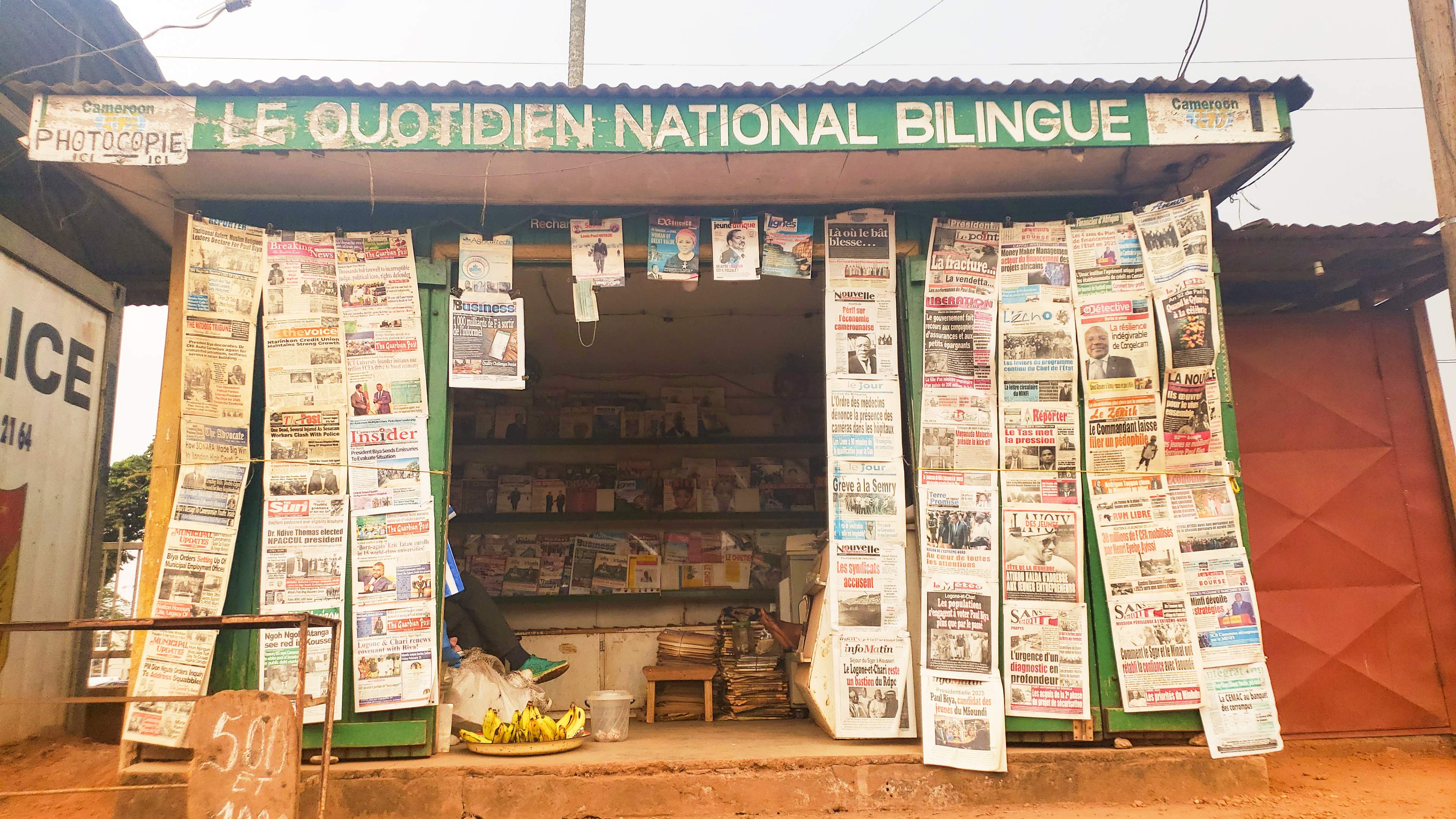في الذكرى السبعين لإنشاء هيئة الأمم المتحدة، طلبت عدة وكالات إعلامية دولية وجرائد من مصوريها في أكثر من 80 بلدا، التقاط صور لبعض المباني التي ستضاء وتُزيّن باللون الأزرق ليلا، احتفاء بتلك المناسبة. ومن بين 350 معلما اختير في جميع أنحاء العالم، كان للجزائر العاصمة نصيب وافر، إذ تقرّر إضاءة خمسة من معالمها.
وفي الموعد المحدد، توجَّهت مجموعة من المصورين الصحفيين الجزائريين إلى مناطق تلك المباني لأخذ صور خارجية لها وتنفيذ المهمة. وبطبيعة الحال، ابتدأ العمل ليلا في تصوير أول مبنى، لكنهم ما لبثوا أن وجدوا أنفسهم محاطين وممنوعين من التصوير من طرف رجال الأمن بالزي المدني والبدلة الزرقاء، وهو اللباس الرسمي للشرطة الجزائرية. وبعد أخذ ورد، طلبوا منهم مغادرة المكان ومنعوهم من التقاط صور بدون تصريح، مع أن رجال الشرطة أنفسهم لا يعلمون من أين يؤخذ التصريح!
حينها، خاطب أحد المصورين زملاءه مازحا "جئنا لنصور مباني زرقاء فوجدنا أنفسنا محاطين باللون الأزرق من كل مكان".. غادر المصورون الصحفيون المكان وكلهم أسى لعدم ظهور صور المعالم الجزائرية مع نظيراتها في الدول الأخرى، وحسرة لا توصف إلى ما آلت إليها مهنتهم، بعد ما كان للصورة الصحفية في الجزائر من ثقلٍ في وقت مضى.
أول الحكاية
للصحافة والتصوير الصحفي في الجزائر تاريخ قديم يقسم إلى مراحل، أولها: مرحلة ما قبل الاستقلال، أي إبان الاستعمار الفرنسي، حيث كانت الصحافة قومية جماهيرية تحررية شعبية، وكان الاستقلال وتحقيق السيادة الوطنية في مضمونها كتابة وصورة؛ من أهم مطالبها. في تلك الحقبة الاستعمارية، ورغم أن المصورين الصحفيين الجزائريين كانوا قلة، فإنهم كانوا جزءا لا يتجزأ من النضال الثوري والسياسي. أما سلاحهم، فقد كان "آلات التصوير". بذلك السلاح، خلدوا أهم أحداث ثورة التحرير، إلى جانب بعض المصورين الأجانب الذين عملوا في سرية تامة داخل المجتمع الجزائري، فكان عمل الصحافة ينصب على تقوية الوعي والحس السياسي والثوري، وهو ما ساعد على التعريف بالقضية الجزائرية لدى الرأي العام العربي والدولي. وشهدت جل الصحف في تلك الفترة -سواء الناطقة باللغة العربية أو الفرنسية- مضايقات من طرف المستعمر، فكانت تطبع وتوزع وتنشر داخل الجزائر وخارجها بسريَّة.
ما بعد الاستقلال
في المرحلة الثانية وهي مرحلة ما بعد الاستقلال، أي بعد عام 1962، عرفت الجزائر صحافة حكومية، وكانت الجرائد وطنية نظامية مهمتها تعبئة الجماهير حول برامج سياسية واقتصادية وحكومية وحتى ثقافية.. جرائد ذات اتجاه واحد يمجد ولا ينتقد النظام الحاكم، وكل المواضيع تصب في مسار إيجابي، وكانت معالجة المواضيع السياسية تتم من زاوية واحدة هي زاوية سياسة الحزب الواحد آنذاك؛ أي أنها كانت تلعب دورا ترويجيا للمشاريع التنموية للبلاد اجتماعية كانت أو اقتصادية أو لقضايا دولية. وفي الوقت نفسه، لم تكن تتبع وتيرة الشعب الذي صار معظمه متفتحا على مجتمعات الدول الأخرى.
ومن هذه الرؤية جاءت مطالب داخلية تطالب بالانفراج الاجتماعي والسياسي، فانفجرت عنها أحداث وثورة شعبية ضد النظام الحاكم في 5 أكتوبر/تشرين الأول 1988، وأصبح هناك انفتاح أكثر في المجالين السياسي والإعلامي. وقد مثلت تلك الأحداث منعرجا حاسما وتغيرا جذريا انبثقت عنه التعددية الحزبية والإعلامية، وأعطى انطلاقة للصحافة الخاصة الحرة التي بدورها صارت تعالج المعلومة بصيغة جديدة تحمل وجه الإعلام المستقل، فصار للرأي العام منبر للنقد والتعبير عن رأيه، لكن هذه الفترة لم تدم طويلا.
آلاف الصور الصحفية في "العشرية السوداء"
في بداية التسعينيات عرفت الجزائر موجة عنف ودخلت في دوامة من "الإرهاب" أو ما يعرف "بالعشرية السوداء"، وهو صراع مسلح قام بين النظام الجزائري وفصائل متطرفة مسلحة تتبنى أفكارا إسلامية متشددة وعدوانية لكل من له صلة بالدولة ومؤسساتها، فلم يسلم من هذه المجموعات "الإرهابية" أحد، من أبسط مواطن إلى أكبر مسؤول في الدولة.
وكان من ضحايا هذه المأساة الأسرة الإعلامية، فقتل ما لا يقل عن 100 إعلامي جزائري من مذيعين ومدراء جرائد ووكالات وتقنيين ومقدمي نشرات.. إلخ.
ومن بين الكم الهائل من الضحايا، اغتيل أكثر من 60 صحفيا ومصورا صحفيا، كانوا يزاولون مهنتهم في مختلف الجرائد الصادرة بالعربية أو الفرنسية، وهذا ما دفع الكثير منهم إلى مغادرة مساكنهم وأهاليهم، ومنهم من غادر الوطن إلى بلدان أجنبية أكثر أمانا.
كانت يوميات الجرائد الجزائرية تفتح صفحاتها الأولى بصور الدمار والقتلى وخراب السيارات المفخخة، وكان للمصور الصحفي مكانة أساسية في الجرائد اليومية، فكان عملهم في الميدان تحديا لكونهم لم يكونوا مدرَّبين على تغطية مناطق النزاعات المسلحة، أو مؤهلين للعمل في ظروف حرب، وبجملة بسيطة فرضها الميدان كانوا "مصوري حروب".
اقتصر عمل المصورين الصحفيين خلال تلك العشرية على تصوير الدمار والموت في عدة مناطق من الجزائر دون أدنى شروط الحماية المعتمد عليها في مثل هذه النزاعات المسلحة، فلم يكن لهم سترات أو خوذات واقية للرصاص.
لنتخيل كيف لمصور صحفي في بلاده أن يأخذ صورا لجيرانه أو عائلته التي قتلت على أيدي مسلّحين؟ ومن أين استمد القوة النفسية والعقلية لرؤية زميله في نفس الجريدة أو المكتب وهو جثة هامدة بعد اغتياله؟ وكيف له أن يأخذ صورا لزملائه وهم أشلاء متناثرة بعد تفجير مكان عملهم بسيارة مفخخة أو قنبلة، في حين أنهم -كمصورين صحفيين- كانوا هم أيضا معرضين للقتل أو الاختطاف في أي مكان أو زمان.
في أحيان أخرى، كان المصورون الصحفيون يصلون إلى أماكن التفجيرات والاغتيالات قبل وصول الإسعافات والتعزيزات الأمنية إلى تلك الأحياء أو القرى المتضررة. لنقل إن المصورين الصحفيين -من الرجال والنساء- في تلك الأزمة أثبتوا عصاميّتهم، وإن كان بينهم مخضرمون، إذ لم يكونوا خريجي جامعات أو معاهد إعلام أو تصوير صحفي، إلا أنهم عملوا -ولا يزالون- في أكبر الوكالات الإعلامية العالمية، ويغطون أكبر الصراعات والثورات والحروب سواء في العالم الغربي أو العربي، فأعمالهم الفوتغرافية تنشر في أكبر الجرائد والمجلات العالمية الأميركية والأوروبية والعربية، ومنهم من نال جوائز دولية في مجال التصوير الصحفي العالمي.
كانت الغلبة في تلك الفترة للصورة الصحفية، وكانت هيئة التحرير تتعاون مع المصور الصحفي في اختيار الصورة المرافقة للمادة المكتوبة، سواء أكان موضوعها أمنيا أو سياسيا أو حتى ثقافيا، وكانت أبسط صورة التقطت في إحدى الحفلات الفنية لمغنٍّ أو فنان جزائري أو أجنبي في الجزائر أثناء تلك الفترة المتأزمة، تطاولها مكانة وقيمة ولها قراءة سوسيولوجية وأمنية؛ فتلك الصورة البسيطة في مضمونها تمثل بصيص أمل للشعب الجزائري الذي ينتظر الأمن والطمأنينة والخروج من تلك الدوامة، وكان الجميع في هيئة التحرير من مدير إلى مركِّب الصفحات يعمل باستشارة المصور قبل تركيب الصور في الجريدة أو بعدها.
أمانٌ في البلاد وفوضى في الصحافة
في نهاية التسعينيات وبداية الألفية الثالثة، بدأت بوادر السلم والمصالحة تطفو على سطح المجتمع الجزائري، وهنا عرفت الصحافة المكتوبة انفتاحا وتدفقا هائلا لمختلف العناوين المقروءة، فأصبحت توزع أكثر من 120 جريدة يومية وأسبوعية ومجلة متخصصة، ولكن كل هذا الكم كان بعيدا عن التأطير والتنظيم، وكان للصحافة الجزائرية حق النقد والتعبير، أو بعبارة بسيطة "حرية التعبير"، لكن بدون المساس برموز الدولة والحريات الأساسية.
أعطت الدولة الجزائرية أهمية كبيرة للإعلام والصحافة بترسيم اليوم الوطني للصحافة الجزائرية يوم 22 أكتوبر/تشرين الأول من كل عام، إلا أنه ما زالت أمام الصحافة رهانات وتحديات وفراغات قانونية، كما أنها تعاني من نقص التأطير.
أما بالنسبة لحرية الصحافة دوليا فالجزائر في ذيل الترتيب العالمي. صحيح أنه لم يسجن أو يعاقب أي مصور صحفي في الجزائر، لكن عمل المصور حاليا تراجع كثيرا، سواء في الميدان أو في الجرائد، بسبب عدم إعطاء أهمية للصورة في مختلف الجرائد باستثناء عدد منها لا يتجاوز أصابع اليد. كما بات المصور الصحفي مطاردا من قبل عدة عواقب مهنية واجتماعية خلّفت أوضاعا حرجة بالنسبة له، إضافة إلى الدخل المتواضع جدا مقابل عملهم. كما أن بعضهم غير مشمول بالتأمين الاجتماعي رغم المخاطر التي تحدق بهم يوميا، وهم يفتقرون إلى أدوات العمل والحماية الميدانية من سترات أو قبعات أثناء تغطيتهم لمختلف الاحتجاجات أو التظاهرات الرياضية التي تتخللها أعمال عنف من رشق بالحجارة أو الغازات المدمعة. أما بالنسبة للجانب النقابي أو الجمعوي، فهم يفتقرون إلى نقابة أو فدرالية أو حتى جمعية خاصة بهم للدفاع عنهم وحمايتهم أو إعطائهم فرصا لإعادة التكوين.
وللإشارة، فإن الجزائر ليس بها جامعات أو مدارس خاصة بالتصوير الصحفي، ما خلا بعض مراكز التكوين المهني التي تعطي تكوينا في التصوير الفني بأسلوب نظري خال من أي تخصص. فمعظم المصورين في الجزائر يغطون مختلف الخرجات الرسمية الحكومية والمقابلات الرياضية في نفس اليوم، ورغم كل هذا النقص فإنهم لا يتفانون في تأدية عملهم بكل صرامة وروح المغامرة في الميدان. كما أن بعض هيئات التحرير لها دور بارز في تراجع عمل المصور وتردي أوضاعه، بسبب دخول بعض الانتهازيين وناقصي المهنية إلى مجال الصحافة المكتوبة، وبينهم مدراء نشر ومدراء تحرير، وهؤلاء ليس لهم أي علاقة قريبة أو بعيدة مع عالم الصورة الصحفية، بل همهم الوحيد ملء صفحات الجرائد بصور دون مراعاة النوعية أو حتى أخلاقيات المهنة؛ من بث مصدر الصورة أو حقوق ملكية المصور أو الوكالة.
كما أصبحت مواقع التواصل الاجتماعي ومحركات البحث -مثل "غوغل"- منافسين للمصور الصحفي الجزائري، وصارت هيئات التحرير تعتمد على كل ما ينشر على مواقع الإنترنت وتأخذ تلك الصور بدون أي إذن أو تدقيق فيما يخص المكان والزمان، سواء أكانت وطنية أو دولية، وهو ما خلق نقصا في التنسيق بين هيئة التحرير والمصورين في نفس الجريدة أو المجلة، فصارت جلها خالية من التقارير المصورة على صفحاتها.
أما إذا تحدثنا عن العوائق الميدانية، فالقصة التي جاءت في بداية التقرير تصور الحال، إذ تكمن المضايقات في عدم السماح بالتصوير ومنع المصورين من العمل بحرية في عدة أماكن أو مناسبات، وفي أكثر الحالات يُمنعون من طرف رجال الأمن وبعض المسؤولين والمنظِّمين حتى لو كان التصوير في أماكن عمومية التبعية، ورغم امتلاكهم البطاقات الصحفية المهنية أو توكيلات المهام، فقد أصبح إخراج آلة التصوير هاجسا وخطرا على المصور الصحفي في بعض الأماكن.
وحاليا، تعمل الحكومة الجزائرية والوزارة الوصية جاهدتين من أجل إعادة التنظيم وهيكلة الحقل الإعلامي في الجزائر، لكن دون إعطاء أي تصنيف أو تقنين لمهنة المصور الصحفي، وتركه في الخانات الأخيرة في سلم المهن، رغم أهمية الصورة الصحفية التي تشكل ذاكرة جماعية للإنسانية عبر الزمن.
